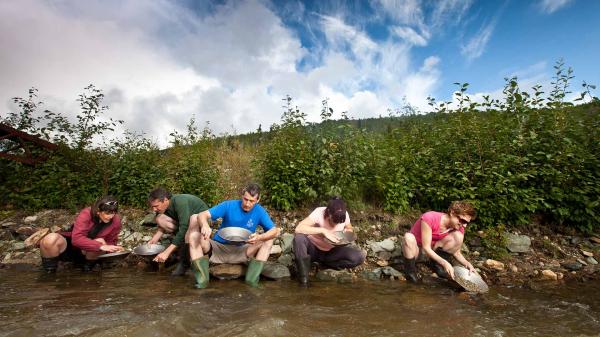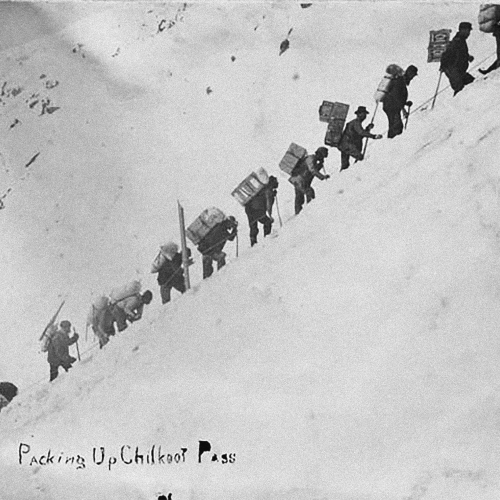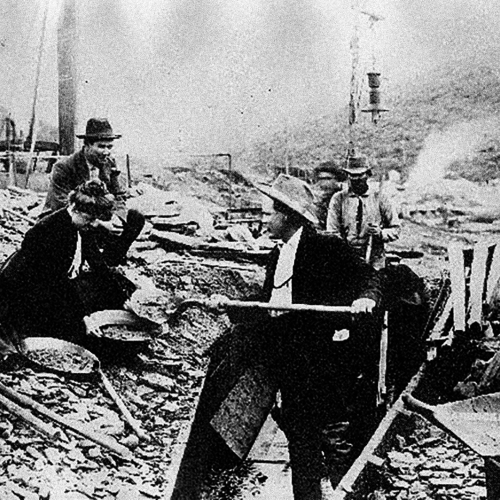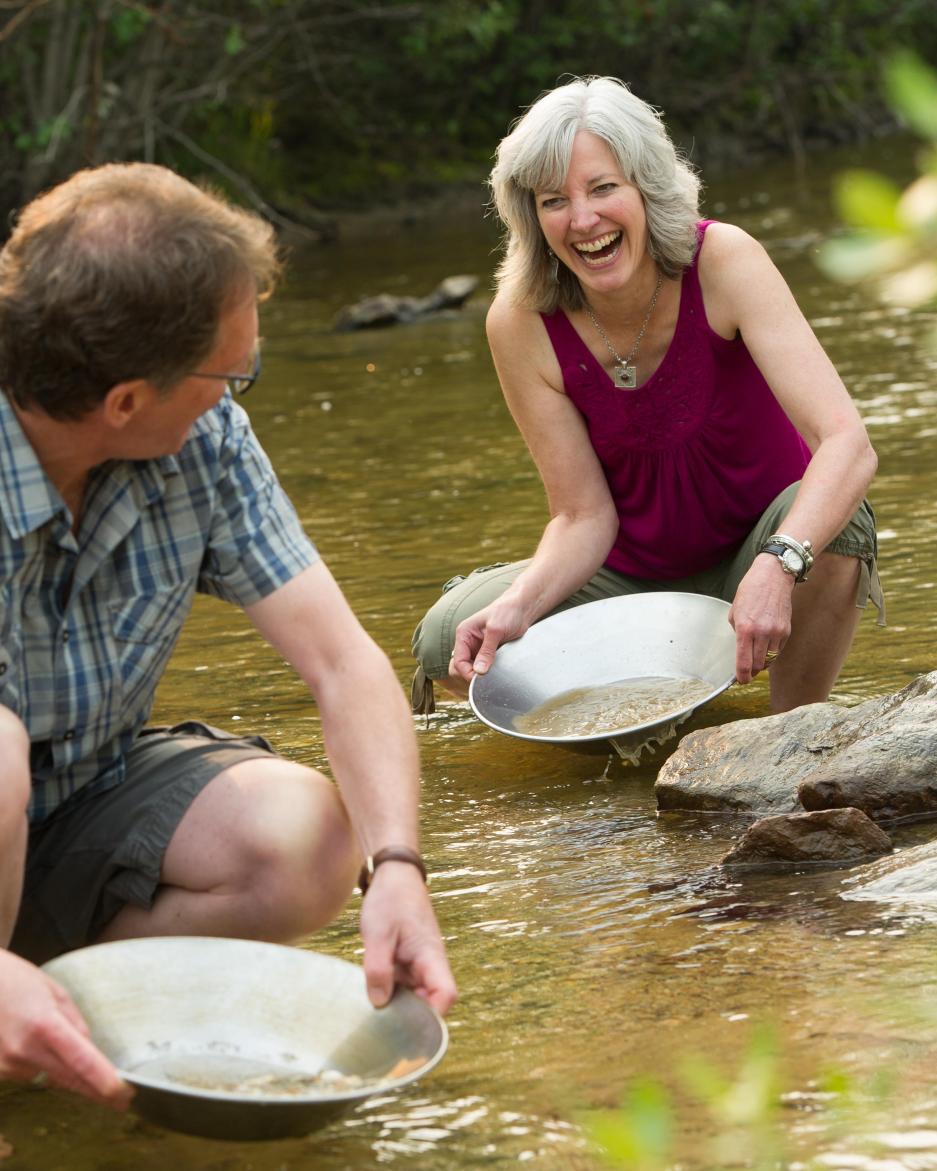
Klondike Gold Rush

"I wanted the gold and I sought it..."
The Yukon’s most well-known historical moment occurred in 1896 when Shaaw Tláa (Kate Carmack), her brother Keish (Skookum Jim Mason), and nephew Káa Goox (Dawson Charlie) of the Carcross/Tagish First Nation, alongside Kate’s husband George Carmack, discovered gold at Bonanza Creek near Dawson City.

This sparked the Klondike Gold Rush (1896-1899), drawing more than 30,000 prospectors to the area and turning Dawson City into one of the largest cities in the North West. Though the rush generated immense wealth, most prospectors left empty-handed, symbolizing the harsh realities many faced.

The influx of prospectors had profound effects on the land and the local First Nations people, whose presence in the region spanned thousands of years. The rapid development brought by gold-seekers altered the landscape and disrupted Indigenous ways of life, with the long-lasting impacts of colonialism still felt today. While the gold rush was an era of opportunity for some, it also left scars on the environment and its original inhabitants. Nevertheless, the Klondike Gold Rush shaped the cultural and societal landscape of the Yukon. The legacy of those years, both positive and negative, continues to influence the region’s identity, reflecting the resilience and adaptation of its people.



Notable women of the Klondike
The Klondike Gold Rush, which began in 1896, sparked a massive movement of more than 100,000 people to the Yukon in search of fortune. While much of the history focuses on the male prospectors, several women also played crucial roles in shaping this momentous period. The journey to the Klondike was perilous, but women found ways to thrive, not just by prospecting but by building businesses and contributing to the social and cultural fabric of the region.

“The story of the Klondike is an epic journey,” says Patricia Cunning, Executive Director of the MacBride Museum in Whitehorse. “For most of the people who came to the Klondike – even those who didn’t make it all the way to Dawson City – it was a defining moment in their lives. While it was adventurous and exciting, it was also dangerous, difficult, and emotionally taxing. The money wasn’t just made in the gold field, and the women were well positioned to mine the miners – and not just at the dance hall.”
Among these women was Kate Carmack, a Carcross/Tagish First Nation woman who, along with her family, discovered gold at Bonanza Creek, initiating the gold rush. Lucile Hunter, one of the few Black women to make the journey, followed the Stikine Trail while pregnant and helped operate lucrative claims. Martha Louise Munger Black showed remarkable resilience, trekking the Chilkoot Trail and building a business in Dawson City. Her advocacy for the Yukon eventually led her to become a member of the Canadian House of Commons. Émilie Tremblay, credited as the first white woman to cross the Chilkoot Pass, became a community leader, providing shelter and support for many travelers and widows.
Other notable figures include Kathleen Rockwell, known as “Klondike Kate,” who became the most popular entertainer in Dawson City and used her earnings to acquire significant wealth. Belinda Mulrooney, with her keen business acumen, avoided prospecting and instead built a successful empire by catering to the needs of miners. She eventually opened the prestigious Fair View Hotel in Dawson City. These women not only survived the hardships of the gold rush but also left lasting legacies through their entrepreneurial spirit and community contributions.


